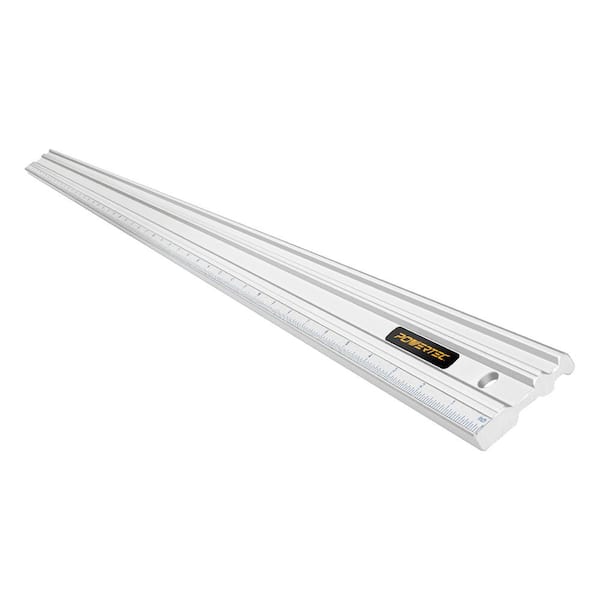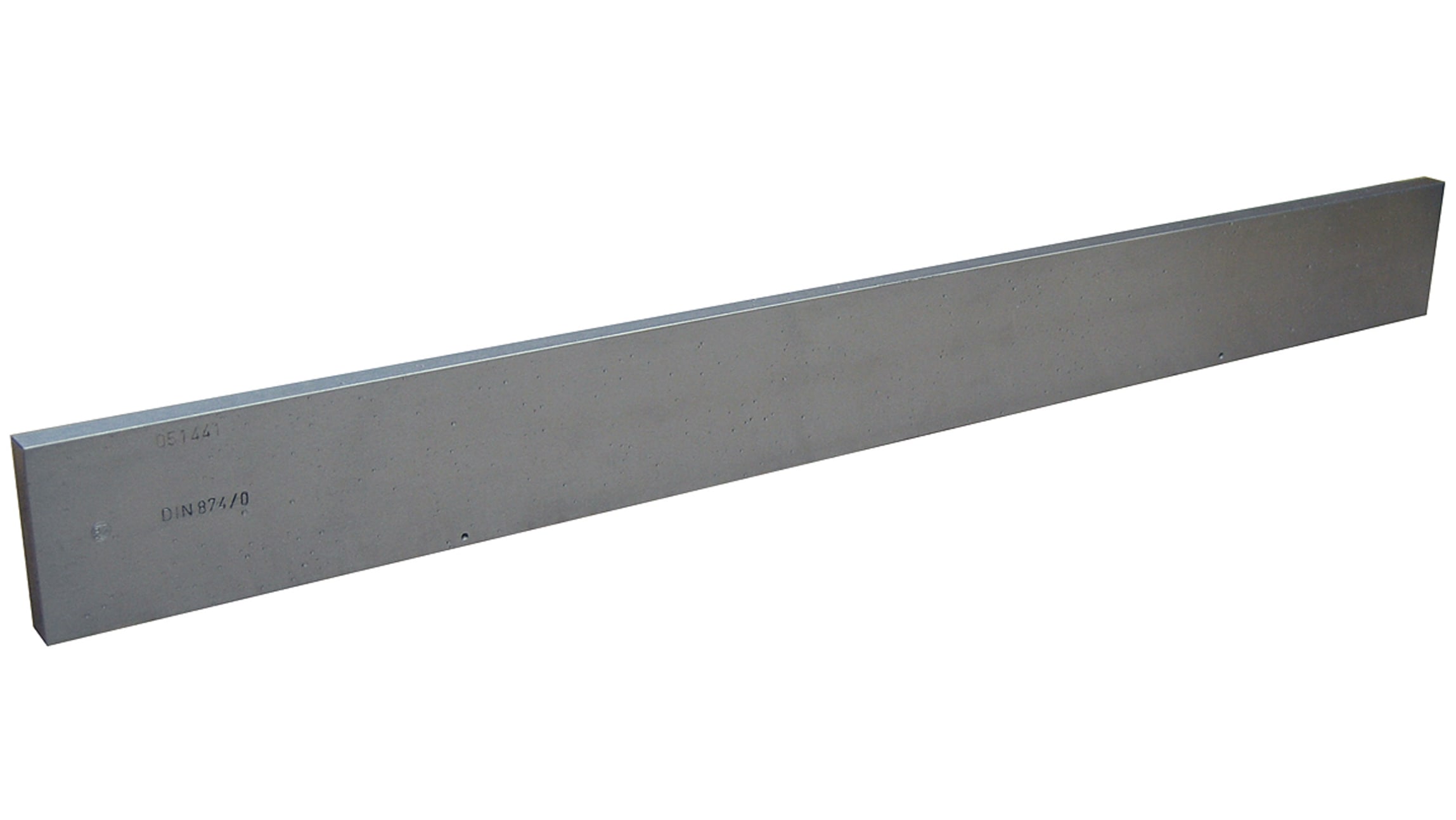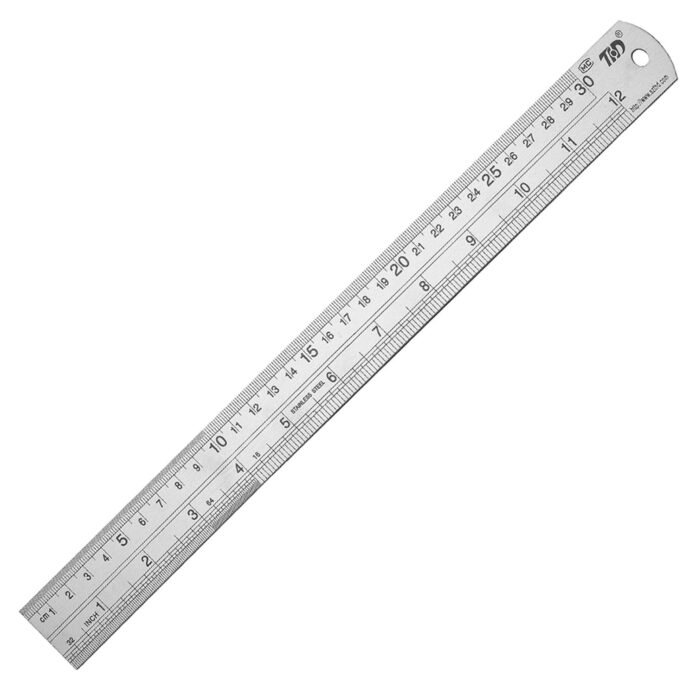A metal straight edge is a tool used for drawing straight lines. It is essential for precision in various tasks.
In many fields, a metal straight edge is indispensable. It ensures accurate measurements and straight cuts in woodworking, drafting, and engineering. Unlike plastic or wooden rulers, a metal straight edge offers durability and precision. Whether you’re a professional or a hobbyist, having a reliable straight edge can make a significant difference in your work.
It helps in creating clean, exact lines without the risk of warping or bending. This tool is not just for tradespeople; artists and designers also find it valuable. In this blog, we will explore the uses and benefits of a metal straight edge, helping you understand why it’s a must-have in your toolkit.

Credit: www.amazon.com
Introduction To Metal Straight Edge
A metal straight edge is a must-have tool for many projects. It helps to draw straight lines and check the flatness of surfaces. Crafting becomes easier and more accurate with this tool. It is durable and lasts longer than plastic or wood rulers. Precision is key in crafting, and a metal straight edge offers it. It is used in woodworking, metalworking, and drawing. This tool ensures your work is neat and precise.
The metal straight edge has a long history. Ancient civilizations used similar tools for building. They made straight edges from stone and wood. Over time, people needed more accurate tools. Metal straight edges appeared during the Industrial Revolution. Engineers and architects used them for precise work. Today, they are a common tool in many fields.
Types Of Metal Straight Edges
Aluminum straight edges are light. They are easy to carry. Steel straight edges are heavy. They are strong and durable. Aluminum is good for small tasks. Steel is best for tough jobs. Both have their own uses. Choose based on your need.
Metal straight edges come in different grades. Higher grades are more precise. Low grades are less accurate. Precision matters for detailed work. Choose the right grade for your project. Higher grades can cost more. But they give better results. Always check the grade before buying.
Key Features To Consider
A good metal straight edge must have high-quality material. This ensures it lasts long and stays straight. Common materials are aluminum and stainless steel. Aluminum is light. Stainless steel is tough and resistant to rust. Choose the material based on your needs.
Length and thickness matter a lot. Longer edges are better for big projects. Shorter ones are good for small tasks. The thickness should be enough to avoid bending. A thick edge stays straight under pressure. Always check these features before buying.
Applications In Various Crafts
A metal straight edge is important in woodworking. It helps to measure and cut wood. You get clean and exact cuts. This tool is strong and does not bend. It ensures your work is perfect. Even beginners find it easy to use.
In metalworking, a metal straight edge is a must. It helps to mark and cut metal sheets. Precision is key here. This tool makes sure every cut is correct. It is durable and can handle tough jobs. Both pros and hobbyists use it.
Using A Metal Straight Edge
A metal straight edge helps draw straight lines. Place it on your work area. Hold it firmly with one hand. Use the other hand to draw your line. Make sure the edge does not move. This will keep your line straight. Check your line often. Adjust if needed. Keep practicing. You will get better.
For more precision, use clamps to hold the straight edge. This keeps it from moving. Use a fine-tip pen for thinner lines. Measure twice, draw once. Avoid mistakes. Keep your tools clean. Dirt can affect your lines. Store your straight edge safely. Avoid bending it. A bent edge is not useful.
Maintenance And Care
Regular cleaning ensures your metal straight edge remains accurate. Store it in a dry place to prevent rust. Periodically check for damage or wear.
Cleaning Methods
Clean your metal straight edge with a soft, damp cloth. Use mild soap if needed. Avoid harsh chemicals. Dry it completely after cleaning to prevent rust. Inspect regularly for any dirt or damage. Remove any debris stuck on the edge. This ensures accurate measurements.
Storage Tips
Store in a dry place. Keep it away from moisture. Use a protective case if available. This prevents scratches and damage. Hang it on a wall for easy access. Keep it away from children. This ensures safety and longevity. Regular maintenance is key to lasting use. Always handle with care.
Common Mistakes To Avoid
Always check the alignment before you start. Even a small misalignment can cause big problems. Make sure the metal straight edge is perfectly aligned. This ensures accurate measurements. Keep your surface clean. Dirt can affect alignment. Use a cloth to wipe the edge. Check alignment often. This helps maintain precision.
Handle the metal straight edge with care. Dropping it can cause damage. Hold it with both hands. This prevents accidents. Store it in a safe place. Keep it away from heavy tools. This avoids bending. Regularly inspect for any dents. Even small dents affect accuracy. Use it gently to prolong its life.

Credit: www.homedepot.com
Choosing The Right Tool
Think about how much you can spend. Prices vary. Basic metal straight edges are cheaper. High-quality ones cost more. Consider the materials used. Stainless steel lasts longer but costs more. Aluminum is lighter and cheaper. Decide what fits your needs. Balancing cost and quality is key.
Some brands stand out. Starrett offers high-quality tools. They are a bit pricey. Kapro provides good value. Their tools are reliable. Shinwa is another option. They are well-made and affordable. Consider these brands when choosing. A good brand ensures accuracy and durability.

Credit: my.rs-online.com
Frequently Asked Questions
What Is A Metal Straight Edge Used For?
A metal straight edge is used for drawing straight lines, checking flatness, and ensuring precision in measurements.
How Do You Maintain A Metal Straight Edge?
To maintain a metal straight edge, keep it clean, store it properly, and avoid dropping it to prevent damage.
Can A Metal Straight Edge Rust?
Yes, a metal straight edge can rust if exposed to moisture. Store it in a dry place.
What Materials Are Metal Straight Edges Made From?
Metal straight edges are typically made from stainless steel or aluminum for durability and accuracy.
Conclusion
A metal straight edge offers precision and durability for any project. It’s an essential tool for professionals and DIY enthusiasts alike. With its reliable accuracy, it ensures straight, clean lines every time. Easy to use and maintain, it can last for years.
Investing in a quality metal straight edge can greatly improve your work efficiency and results. Choose the right one for your needs and enjoy the benefits. Reliable. Precise. Long-lasting. Your projects deserve the best tools.



